Indexed In
- Online Access to Research in the Environment (OARE)
- Open J Gate
- Genamics JournalSeek
- JournalTOCs
- Scimago
- Ulrich's Periodicals Directory
- Access to Global Online Research in Agriculture (AGORA)
- Electronic Journals Library
- Centre for Agriculture and Biosciences International (CABI)
- RefSeek
- Directory of Research Journal Indexing (DRJI)
- Hamdard University
- EBSCO A-Z
- OCLC- WorldCat
- Scholarsteer
- SWB online catalog
- Virtual Library of Biology (vifabio)
- Publons
- MIAR
- University Grants Commission
- Euro Pub
- Google Scholar
Useful Links
Share This Page
Journal Flyer

Open Access Journals
- Agri and Aquaculture
- Biochemistry
- Bioinformatics & Systems Biology
- Business & Management
- Chemistry
- Clinical Sciences
- Engineering
- Food & Nutrition
- General Science
- Genetics & Molecular Biology
- Immunology & Microbiology
- Medical Sciences
- Neuroscience & Psychology
- Nursing & Health Care
- Pharmaceutical Sciences
Research Article - (2020) Volume 11, Issue 9
Impact of Aquaculture and Mariculture Information Dissemination to the Local Coastal Communities in Kenya
Holeh GM*, Ochiewo JO, Tsuma S and Mirera DOReceived: 07-Sep-2020 Published: 30-Oct-2020, DOI: 10.35248/2155-9546.20.11.608
Abstract
Mariculture interventions in Kenya have been introduced with limited training provided to the farmers. For sustainable aquaculture development under KCDP, farmer’s trainings are prioritized. The study was conducted to investigate the awareness level of aquaculture and impact of trainings to the local communities from Kilifi and Kwale in coastal Kenya. A questionnaire was used to collect information and a sample size of 30 communities randomly selected from each of the two counties. Data analysis was carried out using MS Excel and Minitab where the respondent’s views in the pre and post training period were tabulated and displayed in form of percentages. Using correspondence analysis technique, participants’ views were characterized on knowledge capacity of questions displayed in an asymmetric row plot against the selected ranks in form of a Likert scale where farmers indicates Yes, Little or No as per their understanding of the question. 81.4% of the new farmers had no idea about fish farming, 9.30% had little idea and 9.30% had idea on fish farming. On practicing farmers, 61.23% had no idea on fish farming, 14.28% got a little idea and 24.49% agreed to have ideas on fish farming. Farmers confessed to know different culture facilities after the trainings, this study concludes that information is vital and there is still difficulty in sharing it to create a platform for more production and meaningful jobs for communities. It is recommended that extension agents should reach out to communities and pass useful information for farming profitability.
Keywords
Aquaculture; Mariculture; Information dissemination; Correspondence analysis
Introduction
Aquaculture has grown quite fast globally with an annual growth of 5.8 percent during the period 2001-2016 [1]. The contribution of aquaculture to global fisheries production has risen from 25.7 percent in the year 2000 to 46.8 percent in the year 2016. It provides opportunities for sustainable food production, livelihoods and income of local communities [2].
The Kenyan aquaculture sector is broadly categorized into freshwater aquaculture and mariculture [3]. Freshwater aquaculture, the farming of aquatic organisms in natural or controlled freshwater conditions [4,5], is gradually taking off in Africa and is accounting for 95 percent of aquaculture production. On the other hand, mariculture, the farming and husbandry of marine organisms in brackish water or marine environments for food and other products [2,6], has remained undeveloped accounting for only five percent of the production [7]. Whereas freshwater aquaculture has recorded significant progress over the last decade, the mariculture sector has yet to be fully exploited [3]. Mariculture was introduced in Kenya three and half decades ago [8], to provide economic opportunities to coastal communities in order to bring about development in the rural coastal areas [9,10]. It has been observed that 95% of the Kenyan fish landings come from the lakes, 3% from the marine environment and 1% from the aquaculture sector [11]. However, the vast mariculture potential, the mariculture suitability mapping that has been undertaken and the ongoing mariculture developments have not been fully appreciated by the communities hence the need for awareness rising on the importance of mariculture development to the local communities. In addition, mariculture requires some basic skills that are built through training. Training is a process by which the skill and ability of people are improved to perform specific job better and require some level of literacy on the part of the trainees to cope [12]. Training is carried out so as to be fitted, qualified and proficient. With this in mind, there is need for government to encourage more participation of farmers in this type of trainings [13]. This will also raise a need for more extension workers to be employed in order to give the technical knowledge to fish farmers on how to use some equipment and dissemination of new innovations on how to improve their fish farming system and productivity [14].
Further, good fish farming comes as a result of intensive information dissemination to the local communities. Information is vital for increasing production and improving marketing and distribution strategies [15]. It opens windows of sharing experiences, best practices, sources of financial aids and new markets. As posted by Aina et al. [16] it plays a vital role in improving and sustaining agricultural production of any nation.
Other factors that have been considered important in mariculture development are financing, appropriate technology, and extension services. Fish farmers should be encouraged and mobilized to form cooperative groups in order to gain access to credit for easy funding of grants from the government [17]. Extension agents lack adequate mobility to reach some of the farmers that are far from their locations therefore it should be provided for effective coverage and be updated on any new technology for quick dissemination. They should therefore put more effort in reaching fish farmers that have not had contact with them so as to pass useful information and increase their profitability. Communities that have access to extension services have higher profit than those that do not hence they should also search for help and be eager to receive extension agents [18]. The objectives of this study were therefore to investigate the awareness level of mariculture and assess the impact of training on the local communities from Kilifi and Kwale counties in coastal Kenya.
Research Methodology
Study area
The research was carried out in the Kilifi and Kwale counties in the coast of Kenya where communities from different villages were involved in fish farming to enhance their livelihoods and raise their living standards through mariculture. Relevant trainings on mariculture were provided to the farmers in these two counties by government and non-governmental agencies. The research team worked with groups of farmers from Mtwapa, Kilifi, Malindi and Lamu areas.
Data collection and analysis
A questionnaire was used to collect information from the farmers and a sample size of 30 fish farmers was randomly selected from the four local sites. The questionnaire captured the respondent’s views regarding the pre training period including knowledge about fish farming, previous involvement in fish farming, any previous interaction with mariculture, and experience with feeding of fish and how to catch fish from a pond, knowledge about types of fish that are suitable for different types of aquaculture. The symmetric Likert scale that offers a choice in either direction for the respondents was used [19]. The benefits of training to the participants were gauged to find out if the disseminated information was profitable and applicable in the improvement of their social and economic life.
Data was entered in excel sheet and analyzed to gauge the understanding and profitability of trainings to the local people. Then, the categorical responses were exported to Minitab for correspondence analysis. The two-way classification procedure decomposed the values in the contingency table by making an Eigen analysis. The variability was broken down into selected dimensions and related with rows and/or columns [20]. The categorical dataset was characterized by participant’s views on knowledge capacity in an asymmetric row plot against the selected ranks. The ranks were in form of a Likert scale where farmers had indicated yes, little or no based on their understanding of the questions covered. Most topics covered were the basic skills in aquaculture namely formulation of feeds, managing ponds, record keeping, seed production and fish diseases. Evaluation was done before trainings to see if the communities had any idea about fish farming and also same was done after the trainings to see if they well understood the theoretical lessons that were taught and practical application of these lessons on the ground to improve their living standards.
Results
Knowledge about Mariculture
Knowledge of marine culture is summarized in Figure 1 and Figure 2. In terms of knowledge in mariculture, there is a difference in the knowledge by communities on mariculture between the pretraining and post- training periods. The respondents who had mariculture knowledge before training constituted 7.14% of all respondents while 14.3% of the respondents had mariculture knowledge after training. About 78.6% of the respondents had no knowledge of mariculture before trainings and 57.2% confirmed that they acquired knowledge of mariculture after the trainings.
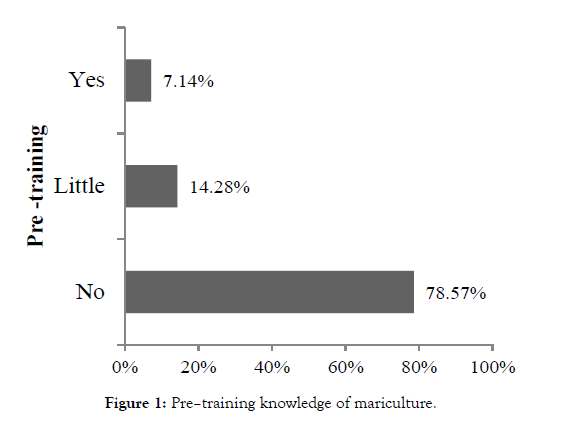
Figure 1: Pre–training knowledge of mariculture.
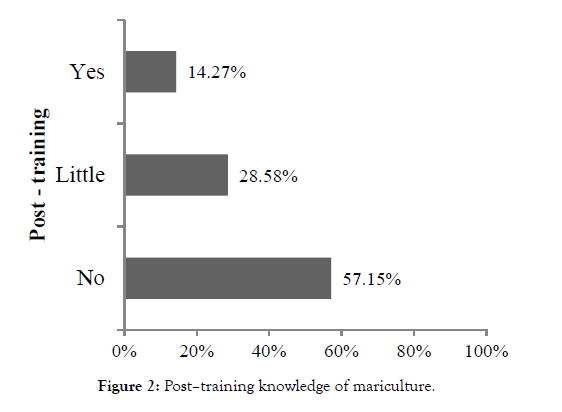
Figure 2: Post–training knowledge of mariculture.
Regarding the general knowledge of fish farming, 9.3% of the respondents had knowledge on fish farming before the training and 24.5% confirmed having knowledge on fish farming after the training (Figure 3 and Figure 4). The findings demonstrate that there is a difference in the knowledge by communities on general fish farming between the pre-training and post-training periods.
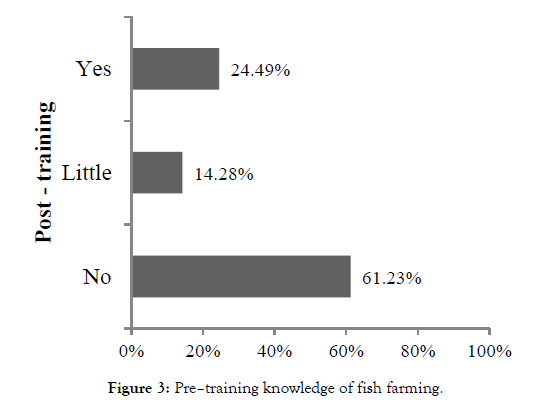
Figure 3: Pre–training knowledge of fish farming.
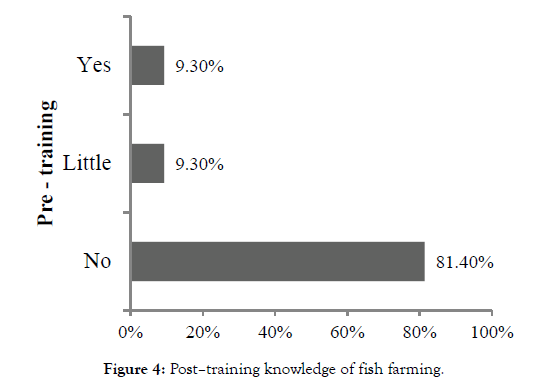
Figure 4: Post–training knowledge of fish farming.
Kilifi post-training correspondence analysis
Inertia and the scree histogram: These results show the decomposition of total inertia of a 10 × 3 contingency table into 2 components (axes) (Table 1). The total inertia explained by the 2 components is 0.3046. Of the total inertia, the first component accounts for 97.38% of the inertia (proportion=0.9738) and the second accounts for 2.62% of the inertia (proportion=0.0262). Together, these 2 components account for 100% of the total inertia (cumulative=1.0). Therefore, specifying 2 components for the analysis may be sufficient.
| Analysis of Contingency Table | ||||
|---|---|---|---|---|
| Axis | Inertia | Proportion | Cumulative | Histogram |
| 1 | 0.2967 | 0.9738 | 0.9738 | ***************************** |
| 2 | 0.0080 | 0.0262 | 1.0000 | |
| Total | 0.3046 | |||
Table 1: Analysis of contingency table-1.
Scale (Table 2):
1. I know what fish farming is all about (Q1)
2. I know what aquaculture is all about (Q2)
3. I know where marine culture is used (Q3)
4. I already tried to get involved in fish farming (Q4)
5. I know how to grow vegetables (Q5)
6. I have visited a fish farming pond or tank (Q6)
7. I know what kind of fish is good for fish farming (Q7)
8. I know how to feed fish in a pond (Q8)
9. I know how to catch fish from a pond (Q9)
10. I know how to make a living from fish farming (Q10)
| Row Contributions | ||||||||||
|---|---|---|---|---|---|---|---|---|---|---|
| Variables | Component 1 | Component 2 | ||||||||
| ID | Name | Qual. | Mass | Inert | Coord. | Corr. | Contr. | Coord. | Corr. | Contr. |
| 1 | Q1 | 1.000 | 0.100 | 0.039 | 0.339 | 0.975 | 0.039 | 0.054 | 0.025 | 0.037 |
| 2 | Q2 | 1.000 | 0.100 | 0.005 | -0.078 | 0.438 | 0.002 | -0.088 | 0.562 | 0.098 |
| 3 | Q3 | 1.000 | 0.100 | 0.526 | -1.265 | 0.999 | 0.539 | -0.031 | 0.001 | 0.012 |
| 4 | Q4 | 1.000 | 0.100 | 0.175 | -0.730 | 1.000 | 0.180 | -0.003 | 0.000 | 0.000 |
| 5 | Q5 | 1.000 | 0.100 | 0.025 | 0.221 | 0.634 | 0.016 | 0.168 | 0.366 | 0.353 |
| 6 | Q6 | 1.000 | 0.100 | 0.070 | 0.457 | 0.983 | 0.070 | -0.060 | 0.017 | 0.045 |
| 7 | Q7 | 1.000 | 0.100 | 0.070 | 0.457 | 0.983 | 0.070 | -0.060 | 0.017 | 0.045 |
| 8 | Q8 | 1.000 | 0.100 | 0.070 | 0.457 | 0.983 | 0.070 | -0.060 | 0.017 | 0.045 |
| 9 | Q9 | 1.000 | 0.100 | 0.008 | -0.046 | 0.083 | 0.001 | 0.154 | 0.917 | 0.296 |
| 10 | Q10 | 0.100 | 0.014 | 0.189 | 0.867 | 0.012 | -0.074 | 0.133 | 0.069 | |
Table 2: Contributions table-1.
The quality values for all 10 questions are 1.000 meaning that all the rows are best represented by the two components. The Inert column gives the proportion of the total inertia contributed by each row. Thus, Knowledge in marine culture (Q3) contributes 52.6% to the total chi-squared statistic and has a stronger association with the column categories (Yes, Little and No) than the other row categories. Knowledge in marine culture (Q3) (0.539) and trying to get involved in fish farming (Q4) (0.18) contribute the most to inertia of Component 1. Knowledge in growing vegetables (Q5) (0.353) and knowledge on how to catch fish from a pond (Q9) (0.296) contribute the most to the inertia of Component 2. The row plot in Figure 5 shows the row principal coordinates. Component 1, which best explains Knowledge in marine culture (Q3) and trying to get involved in fish farming (Q4) shows these two fields farthest from the origin, the former having an opposite sign . Therefore, component 1 contrasts the Knowledge in marine culture (Q3) with knowledge in fish farming (Q1). Component 2 contrasts Knowledge in growing vegetables (Q5) and knowledge on how to catch fish from a pond (Q9) with knowledge in aquaculture (Q2) and knowledge on how to make a living from fish farming (Q10).
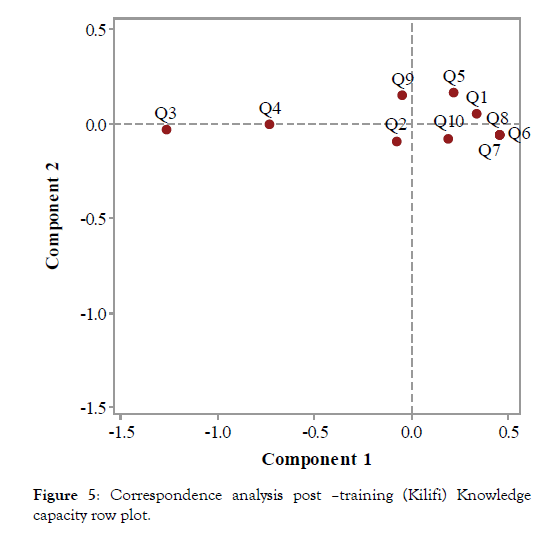
Figure 5: Correspondence analysis post –training (Kilifi) Knowledge capacity row plot.
In the asymmetric row plot of Figure 6, the row points represent the 10 questions and the column points represent the 3 Likert scale choice responses (Yes, Little and No). Knowledge in marine culture (Q3) and trying to get involved in fish farming (Q4) are closest to column category No, implying that both the two questions still had poor response even during the post-training in Kilifi.
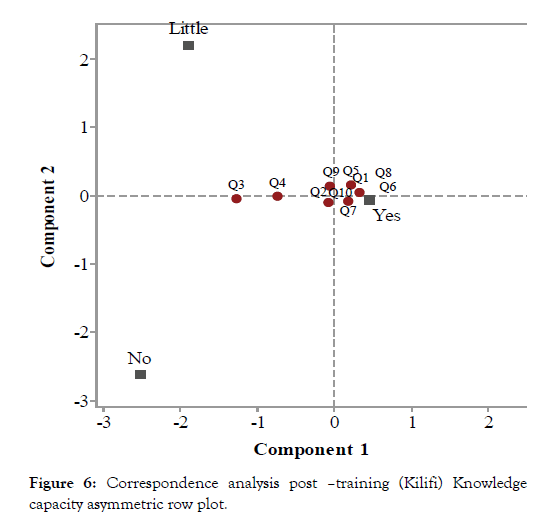
Figure 6: Correspondence analysis post –training (Kilifi) Knowledge capacity asymmetric row plot.
Inertia and the Scree Histogram: These results show the decomposition of total inertia of a 10 × 3 contingency table into 2 components (axes) (Table 3). The total inertia explained by the 2 components is 0.2225. Of the total inertia, the first component accounts for 88.74% of the inertia (proportion=0.8874) and the second accounts for 11.26% of the inertia (proportion=0.1126). Together, these 2 components account for 100% of the total inertia (cumulative=1.0). Therefore, specifying 2 components for the analysis may be sufficient.
| Analysis of Contingency Table | ||||
|---|---|---|---|---|
| Axis | Inertia | Proportion | Cumulative | Histogram |
| 1 | 0.1974 | 0.8874 | 0.8874 | ****************************** |
| 2 | 0.0250 | 0.1126 | 1.0000 | *** |
| Total | 0.2225 | |||
Table 3: Analysis of contingency table-2.
The quality values for all 10 questions are 1.000 meaning that all the rows are best represented by the two components. The Inert column gives the proportion of the total inertia contributed by each row. Thus, trying to get involved in fish farming (Q4) contributes 72.2% to the total chi-squared statistic and has a stronger association with the column categories (Yes, Little and No) than the other row categories. Trying to get involved in fish farming (Q4) (0.812) and knowledge in fish farming (Q1) (0.042) contribute the most to inertia of Component 1. Having visited a fish farming pond or tank (Q6) (0.650) and Knowledge in marine culture (Q3) (0.169) contribute the most to the inertia of Component 2. The row plot in Fig 7 shows the row principal coordinates. Component 1, which best explains Trying to get involved in fish farming (Q4) shows this field farthest from the origin (Figure 7 and Table 4).
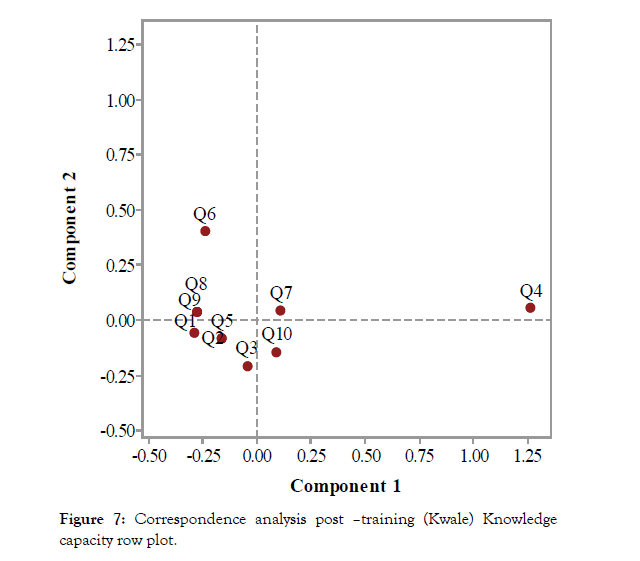
Figure 7: Correspondence analysis post –training (Kwale) Knowledge capacity row plot.
| Row Contributions | |||||||||||
|---|---|---|---|---|---|---|---|---|---|---|---|
| Variables | Component 1 | Component 2 | |||||||||
| ID 1 |
Name Q1 |
Qual. 1.000 |
Mass 0.100 |
Inert 0.039 |
Coord. -0.289 |
Corr. 0.964 |
Contr. 0.042 |
Coord. -0.056 |
Corr. 0.036 | Contr. 0.012 |
|
| 2 | Q2 | 1.000 | 0.100 | 0.015 | -0.163 | 0.788 | 0.013 | -0.085 | 0.212 | 0.029 | |
| 3 | Q3 | 1.000 | 0.100 | 0.020 | -0.047 | 0.050 | 0.001 | -0.206 | 0.950 | 0.169 | |
| 4 | Q4 | 1.000 | 0.100 | 0.722 | 1.266 | 0.998 | 0.812 | 0.057 | 0.002 | 0.013 | |
| 5 | Q5 | 1.000 | 0.100 | 0.015 | -0.163 | 0.788 | 0.013 | -0.085 | 0.212 | 0.029 | |
| 6 | Q6 | 1.000 | 0.100 | 0.099 | -0.240 | 0.262 | 0.029 | 0.404 | 0.738 | 0.650 | |
| 7 | Q7 | 1.000 | 0.100 | 0.006 | 0.107 | 0.871 | 0.006 | 0.041 | 0.129 | 0.007 | |
| 8 | Q8 | 1.000 | 0.100 | 0.036 | -0.279 | 0.984 | 0.039 | 0.036 | 0.016 | 0.005 | |
| 9 | Q9 | 1.000 | 0.100 | 0.036 | -0.279 | 0.984 | 0.039 | 0.036 | 0.016 | 0.005 | |
| 10 | Q10 | 1.000 | 0.100 | 0.013 | 0.088 | 0.275 | 0.004 | -0.143 | 0.725 | 0.081 | |
Table 4: Contributions table-2.
In the asymmetric row plot of Figure 8, the row points represent the 10 questions and the column points represent the 3 Likert scale choice responses (Yes, Little and No). Respondents’ trying to get involved in fish farming (Q4) is closest to column category No, implying that the question still had poor response even during the post-training in Kwale.
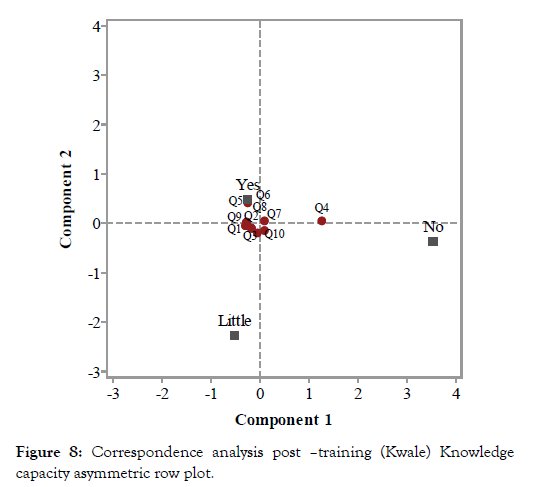
Figure 8: Correspondence analysis post –training (Kwale) Knowledge capacity asymmetric row plot.
Figure 9 below shows that the participants in Kilifi County gave a negative response on the practicability of mariculture. This reveals that they had less exposure to mariculture and needed more time for empirical studies. The current study reveals that the community had not yet acclimatized to established fish farming practices. The pre-training and post-training gap calls for extension to allow the respondents to practically build their fish farming knowledge.
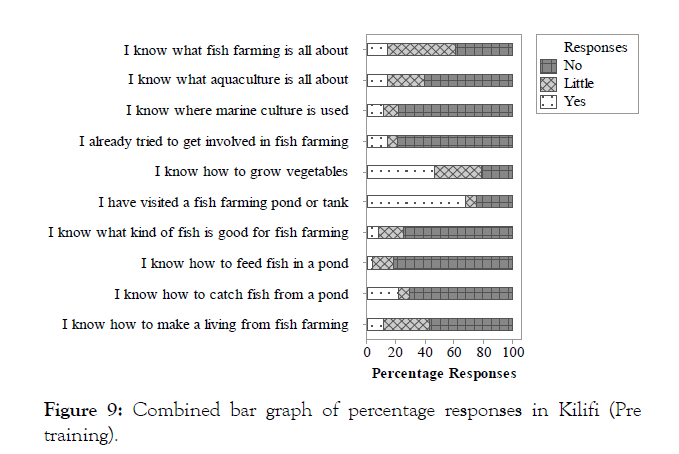
Figure 9: Combined bar graph of percentage responses in Kilifi (Pre training).
The pre-training graph for Kilifi participants shows that the questions based on knowledge on aquaculture, where marine culture used, getting involved in fish farming, knowledge of good fish farming, knowledge on how to feed and catch fish from and in a pond and knowledge on how to make a living from fish farming were significant and needed to be emphasized. During the session, more than half of the participants confessed that they had visited a fish farming pond/tank (Figure 10).
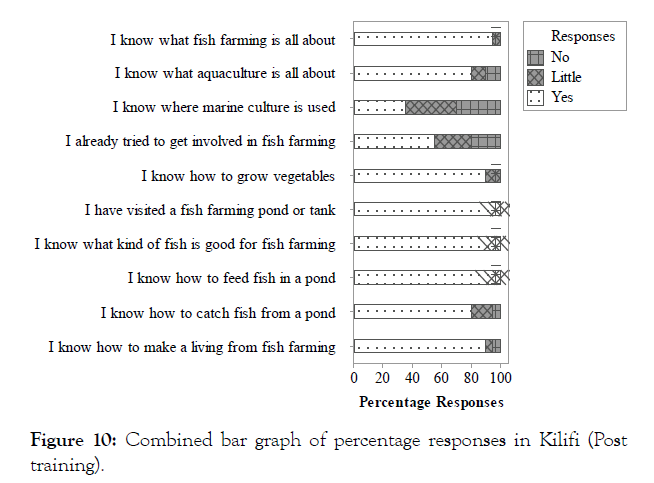
Figure 10: Combined bar graph of percentage responses in Kilifi (Post training).
The post-training graph shows that knowledge of marine culture and getting involved in fish farming needed more attention followed by knowledge in aquaculture, knowledge on how to catch fish from a pond and knowledge on how to make a living from fish farming. Future follow up had to be done on those questions to ensure that the training was not in vain.
Figure 11 shows that the participants in Kwale had not yet affiliated themselves to the fish farming practice. The interval between post and pre-training needed extension to allow the respondents to practically work out their fish farming knowledge. The participants from Kwale had a shallow knowledge on the questions administered compared to the participants from Kilifi during the pre-training session.
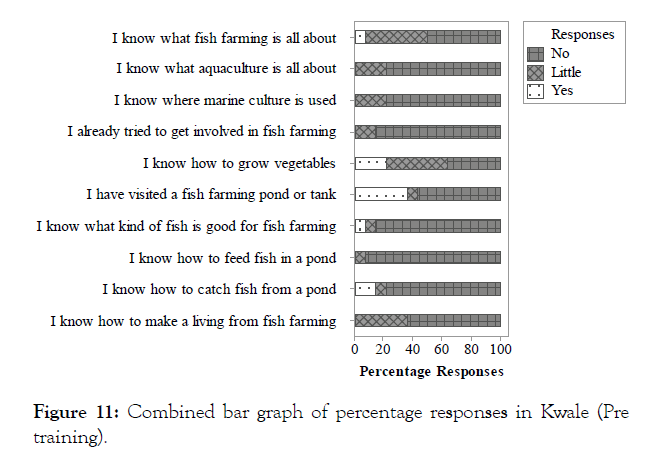
Figure 11: Combined bar graph of percentage responses in Kwale (Pre training).
The Kwale participants had a fair response during the post training compared to Kilifi. The reason behind the shallow positive outcome in fish farming practice is because of the time interval for specialization in fish farming (Figure 12).
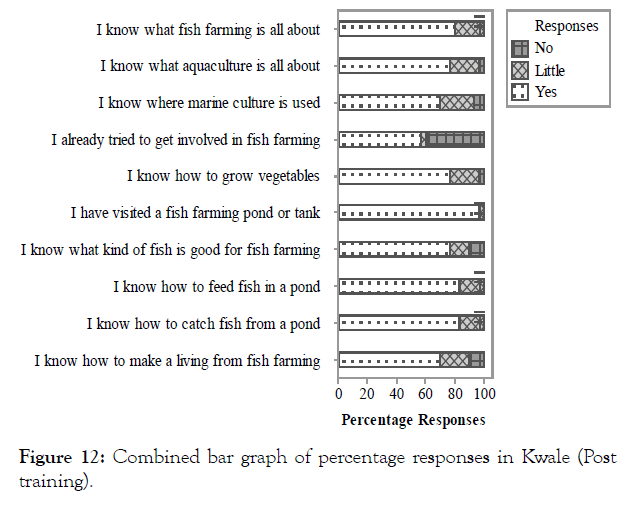
Figure 12: Combined bar graph of percentage responses in Kwale (Post training).
Discussion
This paper investigated the impact of training and disseminating fish farming information to the local people in the coastal Kenya. Most coastal communities are yet to take education seriously hence youths engage themselves in casual jobs, illegal activities, fishing, drug abuse, among others, for economic gains. Reaching out to them with such useful information empowers them to venture in to fish farming as an alternative non-traditional livelihood opportunity. Most farmers pledged and some started to venture in to fish farming since they saw it as a profitable venture through the Kenya Coastal Development Projects (KCDP) trainings and information dissemination in the Kenya Marine and Fisheries Research Institute. The study established that less people had knowledge on fish farming before the training than after the training. In addition, those who were trained went out to apply the skills that they acquired from training in order to improve their standards of living. This implies that the nature of work performed in fish farming requires training. This confirms the findings of Odhiambo et al. that the tasks performed in mariculture in the coast of Kenya required skills that could be built through training. It further confirmed the findings of Mirera et al. that groups which had little training in mud crab mariculture experienced higher mortalities of crabs in their culture systems due to poor handling, poor construction of culture.
Conclusion
Considering the results of this study, it is evident that, it has brought to light some facts about the effectiveness of extension agents in disseminating information on fish farming to the communities. The socioeconomic characteristics of the community and fish farmers in the study area influence their access to extension services. It was also observed that immediately after the trainings, 55% of the communities tried to get involved in fish farming and diversify in different culture systems without any help from the extension workers to improve their living standards. All farmers had an opportunity to visit different culture systems during the trainings. This was all as a result of extension agents reaching out to communities to disseminate information on the fish farming practices. There is a relationship between farmer’s access to extension services and farmer’s profitability when as per the analysis difference displayed between the pre and post training graphs. Those that have access to extension services have higher profit than those that do not.
Recommendations
In view of the findings, it is therefore recommended that extension agents should put more effort in reaching fish farmers and register to the various fish farmers group. For the fish culture system to have an impact, farmers should be involved in the practical aspects of the various culture systems within fish farming unit.
• Hands on trainings should be implemented the most to the communities for practical results.
• The use of local/Swahili language could be important since the communities are not very conversant to the English language.
• Adequate mobility should be provided for the extension agents for effective coverage and they should be updated on any new technology for quick dissemination.
REFERENCES
- FAO. The State of World Fisheries and Aquaculture 2018 - Meeting the sustainable developmentvgoals. Licence: CC BY-NC-SA 3.0 IGO, Rome. 2018.
- Phillips M. Mariculture overview. Encyclopedia of ocean science (Third Edition). 2019; 2: 414-421.
- Munguti JM, Kim JD, Ogello EO. An overview of Kenyan aquaculture: Current status, challenges, and opportunities for future development. Fisheries and Aquatic sciences. 2014; 17: 1-1.
- Edwards P. Aquaculture, Poverty Impacts and Livelihoods. Natural Resource Perspectives, No. 56. London: Overseas Development Institute; 2000.
- Samah R, Kamaruddin R. The influence of socio-demographic factors in adopting good aquaculture practices: Case of aquaculture farmers in Malaysia. Journal of Sustainable Development. 2015; 8: 97-105.
- Secretariat of the Convention on Biological Diversity. Solutions for sustainable mariculture - avoiding the adverse effects of mariculture on biological diversity (CBD Technical Series no. 12), Montreal. 2004.
- Satia BP. Regional review on status and trends in aquaculture development in Sub-Saharan Africa – 2010. FAO Fisheries and Aquaculture Circular No. 106/14. Rome: FAO; 2011.
- Troell M, Hecht T, Beveridge M. Mariculture in the WIO region -challenges and prospects. WIOMSA Book Series. 2011; 8: 11.
- Mirera OD, Ngugi CC. Sustainability and income opportunities of farming milkfish (Chanos Chanos) to local communities in Kenya: Assessment of initial trials of earthen ponds. Ec Fp7 Project Sarnissa. 2009.
- Odhiambo JO, Wakibia J, Sakwa MM. Effects of monitoring and evaluation planning on implementation of poverty alleviation mariculture projects in the coast of Kenya. Marine Policy. 2020; 119: 104050.
- Ministry of Fisheries Development. Annual report. Museum hill, Kenya. 2006.
- Adisa BO, Adeokun AO, Oladoja MA. The Effects of Socio-Economic Factors on Perceived Adequacy of Training Received by Women in Agriculture in Ijebu and Remo Divisions of Ogun State, Nigeria. Journal of Agricultural Extension. 2006: 9: 101-109.
- Aphunu A, Ajayi MT. Assessment of farmers’ perception of the effectiveness of Songhai-Delta fish culture training programme in Delta state, Nigeria. Agro-Science. 2010; 9: 131-136.
- Olaoye OJ, Ashley-Dejo SS, Adekoya EO. Smallholder fish farmers’ information and training needs in Ogun State of Nigeria. Global Journal of Science Frontier Research: Aquaculture and Veterinary. 2014; 14: 1-10.
- Oladele OI. Multilinguality of farm broadcast and agricultural information access in Nigeria. Nordic Journal of African Studies. 2006; 15.
- Aina LO, Kaniki AM, Ojiambo JB. Agricultural information in Africa. Ibadan: Third World Information Services. 1995.
- Salau ES, Lawee AY, Luka GE. Adoption of improved fisheries technologies by fish farmers in southern agricultural zone of Nasarawa State, Nigeria. Journal of Agricultural Extension and Rural Development. 2014; 6: 339-346.
- Agbebi FO. Assessment of the impact of extension services on fish farming in Ekiti State, Nigeria. Asian Journal of Agriculture and Rural Development. 2012; 2: 62-68.
- Joshi A, Kale S, Chandel S. Likert scale: Explored and explained. Current Journal of Applied Science and Technology. 2015; 20: 396-403.
- Greenacre MJ, Blasius J. Correspondence analysis in the social sciences: Recent developments and applications. London: Academic Press. 1994.
Citation: Holeh GM, Ochiewo JO, Tsuma S, Mirera DO (2020) Impact of Aquaculture and Mariculture Information Dissemination to the Local Coastal Communities in Kenya. J Aquac Res Development 11: 9. doi: 10.35248/2155-9546.20.10.608
Copyright: © 2020 Holeh GM, et al. This is an open access article distributed under the term of the Creative Commons Attribution License, which permits unrestricted use, distribution, and reproduction in any medium, provided the original work is properly cited

